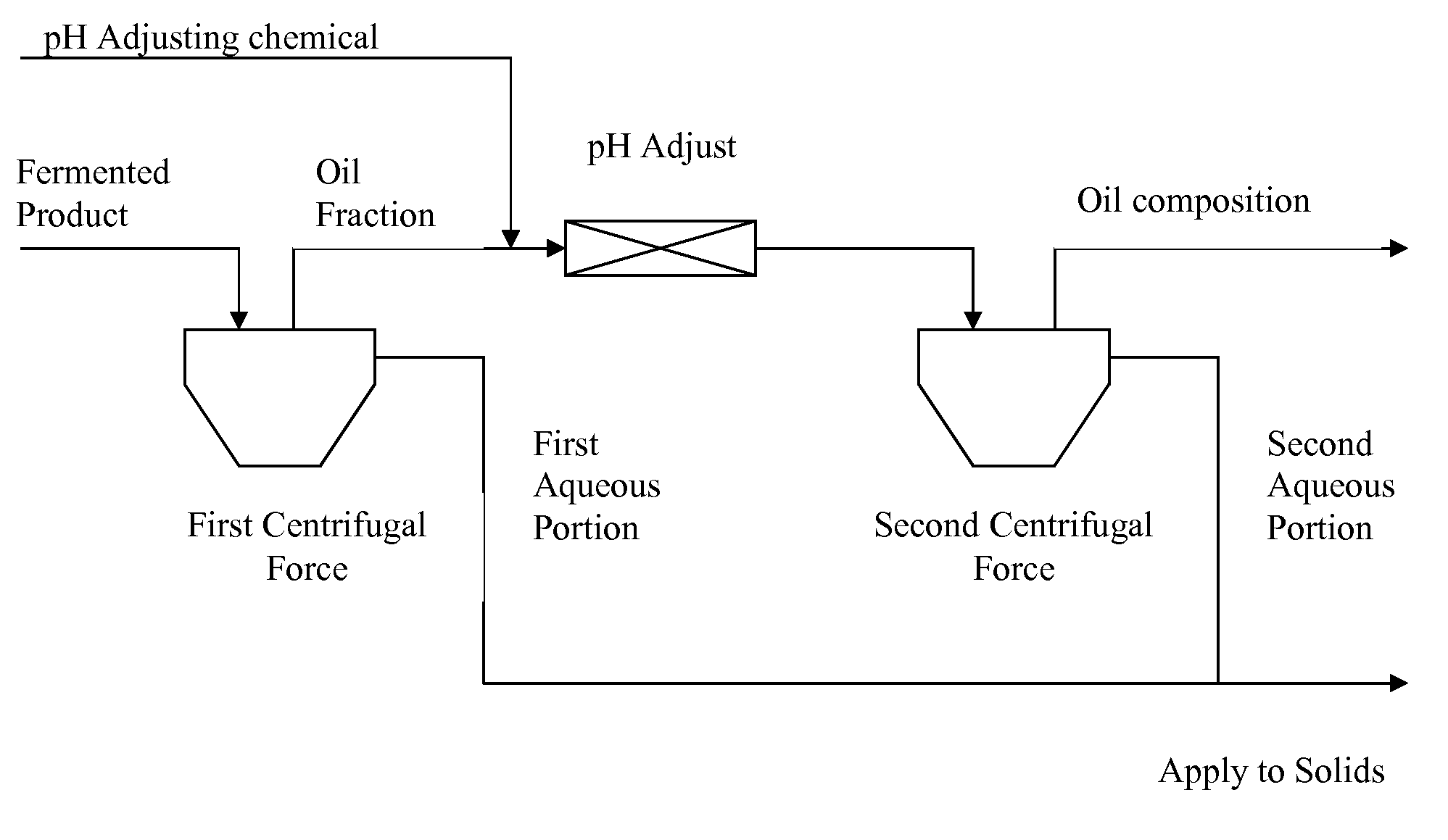Oil composition and method of recovering the same
a technology of oil composition and recovery method, applied in the field of oil composition, can solve the problems of sacrificing oil quality, affecting the production of end products, and affecting the quality of oil, and achieve the effect of low unsaponifiables
- Summary
- Abstract
- Description
- Claims
- Application Information
AI Technical Summary
Benefits of technology
Problems solved by technology
Method used
Image
Examples
example 1
[0117]The pH level capable of providing an oil composition containing a low level of free fatty acid was determined. First, an oil fraction in the form of an emulsion separated from fermented product was adjusted to the pH levels of 7.7, 7.9, 8.0, 8.1, 8.2, and 8.3. The samples were then centrifuged to separate the oil composition and the oil composition was analyzed for free fatty acid content. This experiment was conducted twice. The results of each experiment, Experiment 1 and Experiment 2, are shown in Table 1 and Table 2, respectively.
TABLE 1Experiment 1pH7.77.98.08.18.28.3Free Fatty3.52.22.02.22.01.8Acid %
TABLE 2Experiment 2pH7.77.98.08.18.28.3Free Fatty4.83.53.12.22.01.8Acid %
[0118]In summary, those samples tested at lower pH (i.e., below 8.0) exhibited free fatty acid contents above 3.5% w / w while those tested at a pH above 8.1 exhibited a free fatty acid content of below 2% w / w.
example 2
[0119]Experiments were conducted to determine the amount of free oil present upon adjustment of the oil fraction to various pH levels. A series of oil fractions, in the form of emulsions samples previously separated by a first application of a centrifugal force were treated with NaOH to adjust the pH to various levels as shown in Table 3. Each sample contained the same amount of oil before adjusting the pH. After adjusting the pH to the targeted value, the volume of free oil was measured.
TABLE 3pH7.07.47.88.08.28.48.89.210.0Free Oil %1.03042456048504543Volume
[0120]In summary, the optimum pH was obtained at about 8.2 as evidence by the highest value of free oil volume. The volume of free oil was shown to increase up to this value and then deteriorate thereafter. Thus, an optimum pH for separation exists for each oil fraction sample.
example 3
[0121]Experiments were conducted to demonstrate that the combination of adjusting the pH and applying a centrifugal force resulted in (a) higher quality corn oil compositions and (b) higher corn oil composition yield compared to those oil compositions obtained upon application of a centrifugal force alone. The free fatty acid content was shown to be reduced by up to 3% by adjusting the pH in combination with centrifugal force as opposed to centrifugal force alone. The yield of separated oil composition was increased by 140%.
PUM
 Login to View More
Login to View More Abstract
Description
Claims
Application Information
 Login to View More
Login to View More - R&D
- Intellectual Property
- Life Sciences
- Materials
- Tech Scout
- Unparalleled Data Quality
- Higher Quality Content
- 60% Fewer Hallucinations
Browse by: Latest US Patents, China's latest patents, Technical Efficacy Thesaurus, Application Domain, Technology Topic, Popular Technical Reports.
© 2025 PatSnap. All rights reserved.Legal|Privacy policy|Modern Slavery Act Transparency Statement|Sitemap|About US| Contact US: help@patsnap.com


